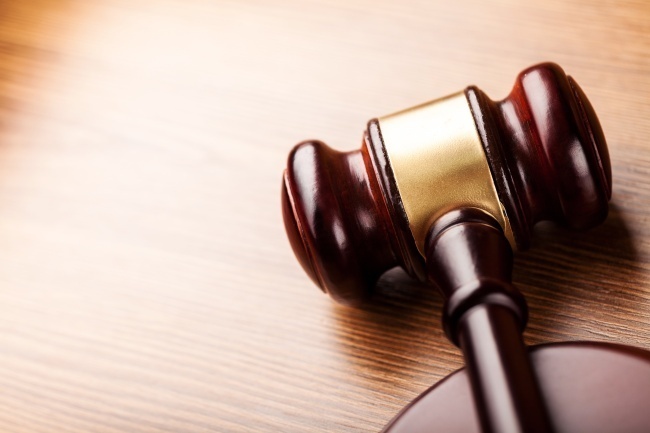[Ask a Lawyer] What companies should know about origin verification in Korea
By Korea HeraldPublished : Nov. 6, 2017 - 14:34
Ask a Lawyer is a regular column written by attorneys at Yoon & Yang LLC on various legal aspects of the Korean life or business. The content provided here is general legal information, not legal advice on a specific situation. -- Ed.
Q: What is the purpose of conducting an origin verification of the goods?
A: Goods imported into Korea’s customs territory are subject to either (i) a most favored nation customs duty, which is the customs duty that generally applies to the goods that fall under a same tariff classification, or (ii) a preferential customs duty, which is the customs duty agreed among a limited number of countries under bilateral or regional trade agreements, and is lower than the MFN customs duty. In order to take advantage of the preferential customs duty, imported goods must be recognized as those originating from the member country of the relevant trade agreement by satisfying the criteria set thereunder. The purpose of conducting the origin verification is to verify and confirm that imported goods, which have enjoyed the preferential customs duty under a trade agreement, meet the relevant criteria.
Q: What is the purpose of conducting an origin verification of the goods?
A: Goods imported into Korea’s customs territory are subject to either (i) a most favored nation customs duty, which is the customs duty that generally applies to the goods that fall under a same tariff classification, or (ii) a preferential customs duty, which is the customs duty agreed among a limited number of countries under bilateral or regional trade agreements, and is lower than the MFN customs duty. In order to take advantage of the preferential customs duty, imported goods must be recognized as those originating from the member country of the relevant trade agreement by satisfying the criteria set thereunder. The purpose of conducting the origin verification is to verify and confirm that imported goods, which have enjoyed the preferential customs duty under a trade agreement, meet the relevant criteria.

Q: What are the rules that apply in determining the originating country of the goods?
A: There can be various types of rules that apply to determine the originating country of goods. For example, the “wholly obtained or produced” rule usually applies to agricultural or fishery products. For manufactured goods, the “change of tariff classification” rule, the “regional value content” rule, or a combination thereof is typical. In order to know the exact rule that applies to the goods that a company plans to import into Korea, the company must have information on the HS code of the goods to be imported, and find the relevant criteria for such HS code in the trade agreement that provides the preferential customs duty.
Q: What is the general process for conducting the origin verification?
A: Generally, the origin verification processes under various trade agreements are divided into two types, namely the “direct” and “indirect” origin verification processes. An example of a trade agreement with a direct origin verification process is the free trade agreement between Korea and the United States, and an example of that containing an indirect origin verification process is the FTA between Korea and the European Union. Under the direct origin verification process, the investigating authority of the importing country conducts the origin verification against the manufacturer and the exporter. Contrarily, under the indirect origin verification process, the investigating authority of the exporting country conducts the origin verification against the manufacturer and the exporter at the request of the investigating authority of the importing country.
In order to conduct the origin verification, investigating authorities generally ask for documents showing that the goods at issue meet the origin criteria under the trade agreement which the importer has taken advantage of. Such documents may include bill of materials, cost for manufacturing the goods, documents related to inventories, etc.
Q: What should companies prepare in order to be successful in the origin verification?
A: Simply speaking, a company planning to enjoy the preferential customs duty should prepare the documents which show that its imported goods satisfy the origin criteria under the relevant trade agreement. This inevitably requires the importing company to obtain documents that are produced by manufacturers or exporters. However, it is not always easy to obtain such documents because such documents often contain confidential business information. Thus, the importing company planning to enjoy the preferential customs duty should prepare and be ready to obtain the necessary documents produced by the manufacturer and exporter in order to be successful in the origin verification process.
By Lee Sung-bum
Attorney and partner of law firm Yoon & Yang LLC
-
Articles by Korea Herald


![[Herald Interview] 'Amid aging population, Korea to invite more young professionals from overseas'](http://res.heraldm.com/phpwas/restmb_idxmake.php?idx=644&simg=/content/image/2024/04/24/20240424050844_0.jpg&u=20240424200058)














![[KH Explains] Korean shipbuilding stocks rally: Real growth or bubble?](http://res.heraldm.com/phpwas/restmb_idxmake.php?idx=652&simg=/content/image/2024/04/25/20240425050656_0.jpg&u=)

